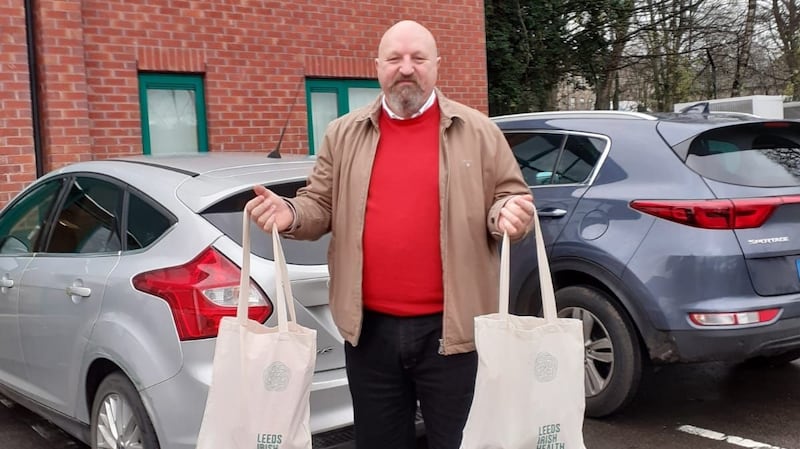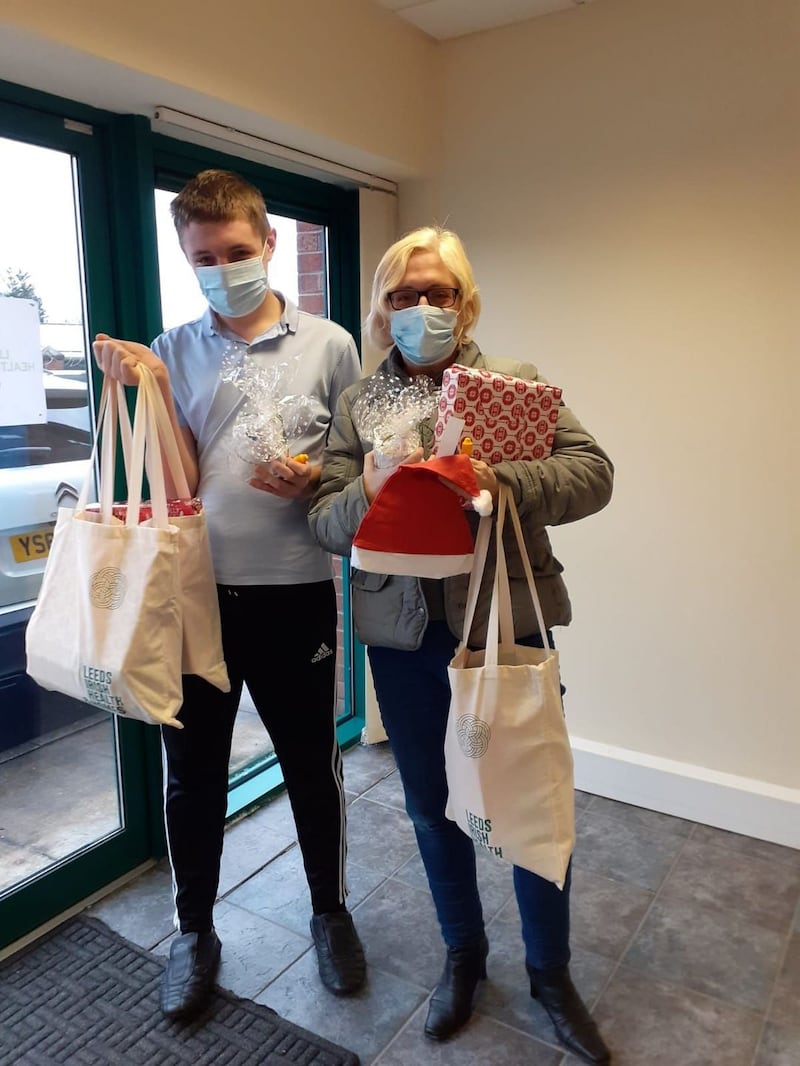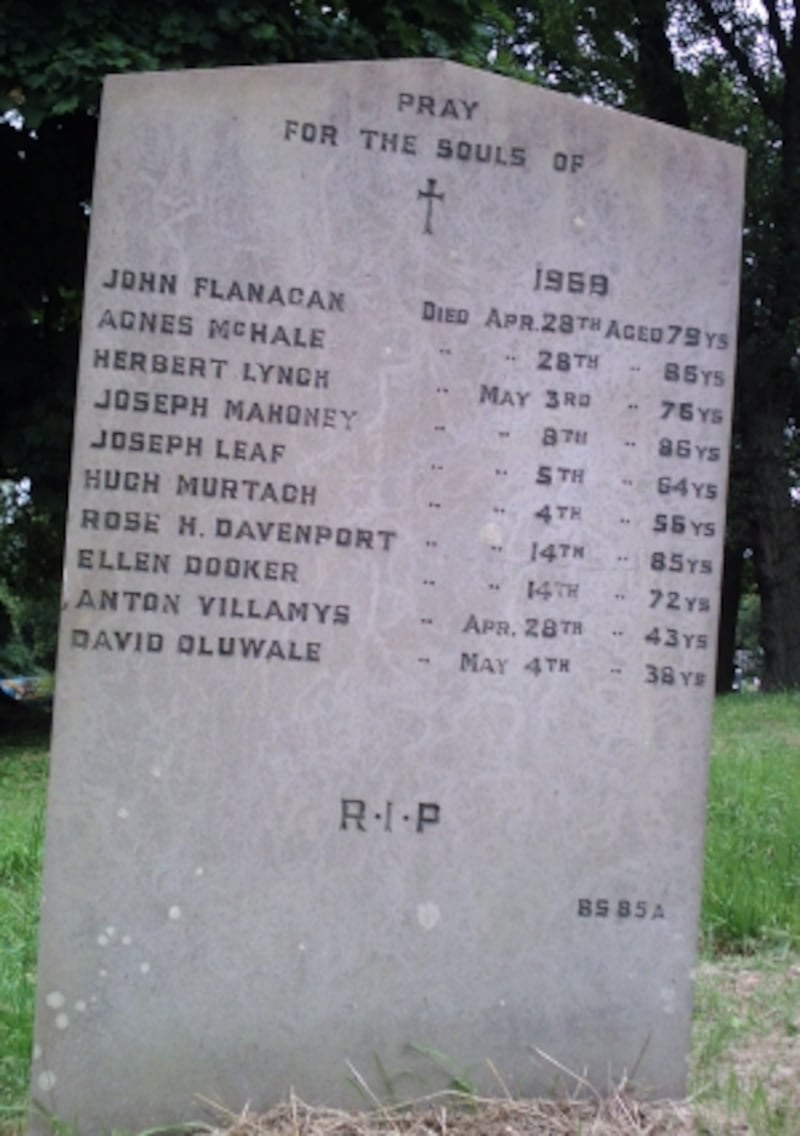When I wrote my last piece here (A Poetic Response to the Pandemic) about Leeds Irish Health and Homes' initiatives relating to Covid-19, I didn't think the community response would attract the national and international attention it has.
Details of this can be found in LIHH’s forthcoming book, Corona Ceoil, funded through the generosity of the Irish Embassy in London, but also with a lot of voluntary input. Corona Ceoil also collects the fruits of two poetry competitions I judged (one each for adults and young people), brief memoirs, thumbnail local history, including of the Leeds writers’ group Lucht Focail and my short account of the city’s extraordinary traditional Irish music scene in lockdown.
Focusing on Leeds, we advertised for contributions through social media and LIHH channels, approaching individuals who we felt might have something to say as well as in schools and places where the Leeds Irish gathered nowadays in the virtual world.
Results were heartening and a pattern quickly emerged, linking both submissions and wider pandemic activity. The Dance of Death was a common trope during European plague outbreaks in the Middle Ages but what I saw during my involvement with the Covid relief effort among Leeds’s Irish community was more akin to a Dance of Life.
Musicians and dancers were heavily involved from the very beginning, including Leeds Comhaltas Ceoltóirí Éireann, especially through Seán Gavaghan, seven times All-Ireland champion on the piano accordion (and exemplar of the Leeds style, which I shall return to later), the Irish Arts Foundation, the Helen Rowland Academy of Irish Dancing, the Watson McCleave Academy of Irish Dancing and the Joyce O’Donnell School of Irish Dancing.


They helped deliver “craic packs” (food, medicines, sanitary and reading material plus morale-boosting treats from Ireland) with Leeds Irish Health and Homes, raised money and appeared on YouTube and Zoom sessions, not just to perform, but to encourage physical activity among the isolated, dancing being a very popular option: “You’ve got to dance like nobody’s watching” enjoined the song Come From The Heart and lockdown was the ideal opportunity to put that into practice.
Des Hurley, chief executive of the Irish Arts Foundation, a widely-known and well-respected fiddler among his other community contributions, organised a number of music programmes on local radio (links below) which were not merely bashing out the standards and old favourites but a sensitive educational series exploring Ireland’s different regional traditions, as absorbing to the expert as the lay listener.
I mentioned earlier that there is a recognisable Leeds style of playing Irish music, something which amazes people in other parts of this country and Ireland when I mention it; I asked Des Hurley about its nature and he suggested: “It came about, I believe, through the historical Leeds-north Mayo connection and the bordering south Sligo ‘Coleman Country’ musical influence.”
This in itself seemed to me a positive image of the migrant experience, bringing culture into a new environment where it develops something unique within the artistic integrity of its own tradition.
Music continually appeared as a theme in the poems I judged for the competitions, from our observation social distancing conventions being recast as a céili by Belinda Connolly to 11-year-old Eden Wells’ Rap. Prose contributions included Gill Newlyn’s Harrington Steps, tracing how from working with horses through the discovery of the Irish dancing master Harrington in her ancestry she ended up running a fiddle school in Kerry.
In an enthusiastic review of Corona Ceoil by Yorkshire Time’s Steve Whitaker (his in-depth analysis of prize-winner Natalie Rees’ Hiraeth can be found on the link below) he writes, “The urge for freedom, which underpins Newlyn’s search for a kind of home, is shared by many in this fine volume edited by Teresa O’Driscoll and Linda Marshall, and if we were to pinpoint a single, overarching impulse, here, it would be one of hope.”
Hope was the driving force behind all these relief efforts and poetry itself is an act of hope, a choice to raise the voice or pen even in dark times, to shape words and send them to meet other people. Hope carried through into related projects, sharing what the Irish here have learned in their own dark times with newer communities.
I also mentioned in my last piece here an ongoing historical research programme into outbreaks of prejudice at times like this: below is a link to From Irish Fever to Chinese Flu: The Racialisation of Epidemics, where Profs Louise Ryan and Don MacRaild were joined by poets Kit Fan, Anna Chen and myself, real scholarly heft combining with new poetry to confront an old story with fresh thinking.
Preparing for this, I was alarmed at the level of casual abuse Anna and Kit continue to encounter, worsened by the pandemic, much as the Irish would have done in the period I wrote about for my end of our project: bookends of bigotry.

Deliberately arranged as the first of a series of launch events for Corona Ceoil is a shared fundraiser with the David Oluwale Memorial Association, an organisation LIHH has worked with frequently over the years and which is now preparing for a memorial sculpture by Yinka Shonibare in David’s memory to be installed in the centre of Leeds.
David Oluwale was a British Nigerian Empire migrant who came to Leeds for work but ended up homeless after mental health problems, like many Irish people I worked with in the homelessness sector. He died in 1969 after a brutal campaign of harassment and abuse orchestrated by two Leeds policemen, Geoffrey Ellerker and Kenneth Kitching, ending in David Oluwale’s death in Leeds’ River Aire under mysterious circumstances.
This national scandal was finally exposed by a second-generation Irish police recruit called Gary Galvin: Ellerker and Kitching received light sentences – Kitching was later head of security in Hepworth’s cloth warehouse, my first job in Leeds. Gary Galvin’s son Carl spoke movingly of David Oluwale at a graveside memorial service.
If you look at the headstone, many names with Oluwale’s are Irish, a testament to their difficult history in this city. Hope is fed by all this remembering, so that what we have learned helps our next struggle have a better chance of success.
With Trump’s departure from office (if not power), the media generally don’t allude to “Chinese flu” so much, particularly since the UK’s home-grown mutations introduced themselves to the world. There was much talk from the government here in the early days of the pandemic when death rates were soaring that underlying conditions were a condition of many fatalities. Somebody commented that if you excluded all those with underlying conditions from his numbers then Harold Shipman didn’t kill anybody.
Now a successful vaccination programme has lifted, if not the fear of infection, the fear many in the Leeds Irish community had the first time round that catching Covid was very likely a death sentence. In the last year, I have found myself quoting more often than I wanted something occasionally seen on headstones in Irish churchyards: “Ní bás acht á fás” or “Not dead but growing”, meaning both that those we have lost rejoin the cycle of life through the soil and that they keep growing in our hearts and others when we share our thoughts and memories of them.
Another phrase during this time remained at the back of my mind: “The crying shadow in the funeral dance” from Eliot’s Burnt Norton has divided critics with regard to what it represents but the words haunted me throughout this lockdown.
This is not to suggest our writers were in denial about death, but rather that beneath the words are the tears of so many, beyond consolation or even adequate expression. Perhaps this is why music was such a strong feature of our relief response, reaching into our minds at the deepest level where we must surrender to something more than us, that we join only for a little while. Words allow us our cry of despair and hope at the funeral and I want to end with the end of a poem I have read at funerals, Derek Walcott’s Sea Canes:
but out of what is lost grows something stronger
that has the rational radiance of stone,
enduring moonlight, further than despair,
strong as the wind, that through dividing canes
brings those we love before us, as they were,
with faults and all, not nobler, just there.
Hyperlinks
To pre-order Corona Ceoil, email Leeds Irish Health and homes on info@lihh.orgLink to virtual launch of Corona Ceoil with David Oluwale Memorial Association fundraiser. Readers include Malika Booker, Kayo Chingonye, Natalie Rees, Teresa O'Driscoll and Ian Duhig.
A sample of Des Hurley's radio programmes on Irish music
The Music of What Happened, Steve Whitaker's review of Corona Ceoil
Poem of the Week: Hiraeth, Steve Whitaker's close reading of Natalie Rees' prize-winning poem in Corona Ceoil
From Irish Fever to Chinese Flu: The Racialisation of Epidemics, a recording of the event organised by the Global Diversities and Inequalities Research Centre of London Metropolitan University









